Deb and I got up early on Friday morning of the Thanksgiving Weekend and headed to Mizzy Lake in Algonquin Park to watch the sunrise and hopefully see a bull Moose. We didn’t see any Moose however enjoyed a wonderful morning and were able to take a few pictures along the way.
The Pileated Woodpecker is the largest woodpecker in North America and is about the size of a crow. Woody Woodpecker is perhaps the most famous Pileated Woodpecker! They are fairly common in Ontario however we don’t often get to see them up close. Deb spotted this one who was working on a fairly isolated Spruce tree, so it was just a matter of waiting for him to fly to another location allowing the opportunity to get some in flight images with a nice clear back ground, which is quite unusual as they are most often seen in the deep forest.
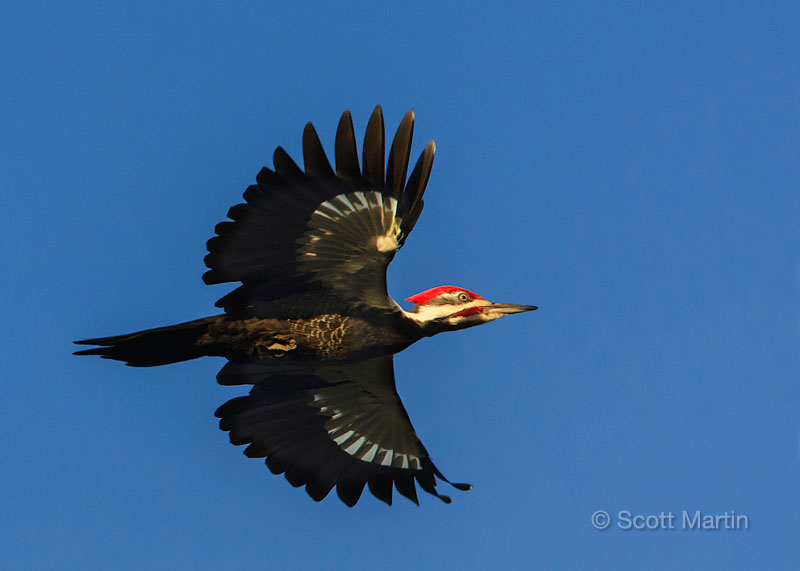
.
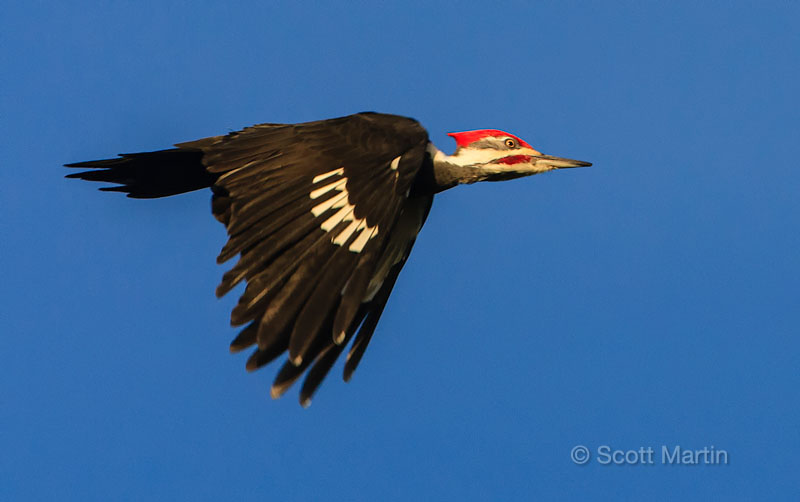
The Gray Jay is a common bird in Algonquin park and is a very friendly bird that readily comes to your hand for a peanut. In fact they often follow you along the trails, especially if you have food for them as shown in this short video clip taken with my iPhone.
Most of the Gray Jays in Algonquin Park are banded, usually with two coloured bands on one or both legs. The bands normally indicate the year and location the birds were banded which allows researchers to monitor the life spans and migration patterns of the birds. It was nice to find a few non-banded birds which make photographers happy as the bands create visual distractions in photographs.
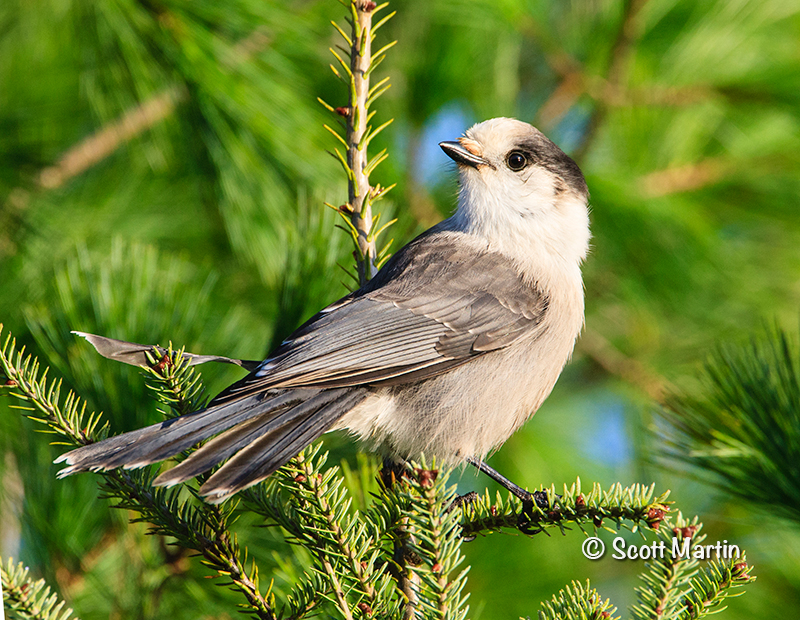
The Mizzy Lake Trail is one of our favourite trails in Algonquin Park and it is accessed from Highway 60 at the Arowhon Road. The trail, like much of Algonquin is characterized by Spruce Bogs. Below are some sunrise and early morning images.
Just before sunrise.
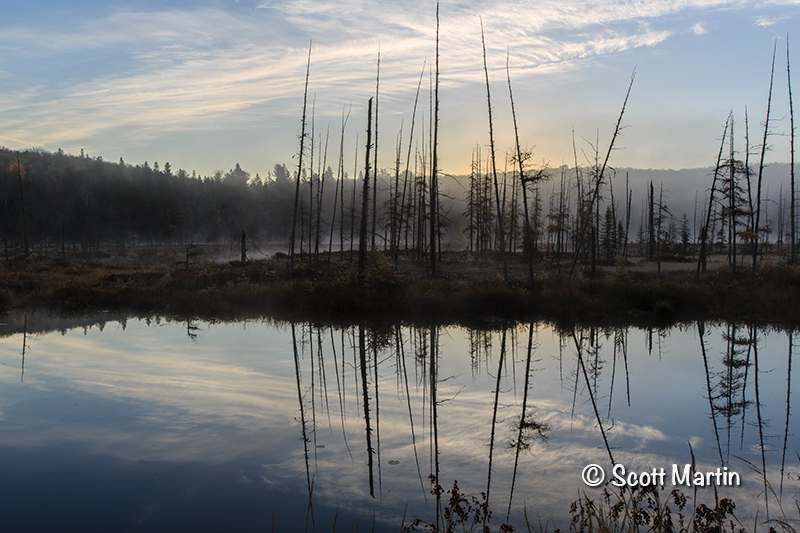
Sunrise
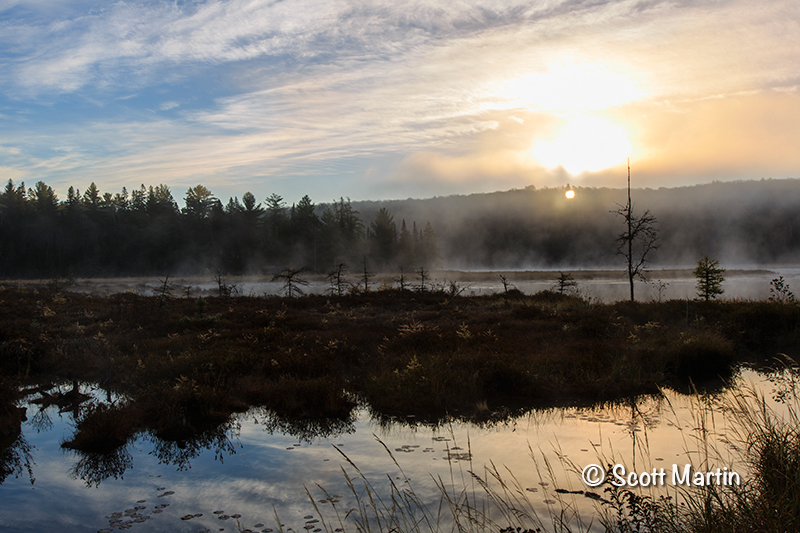
.
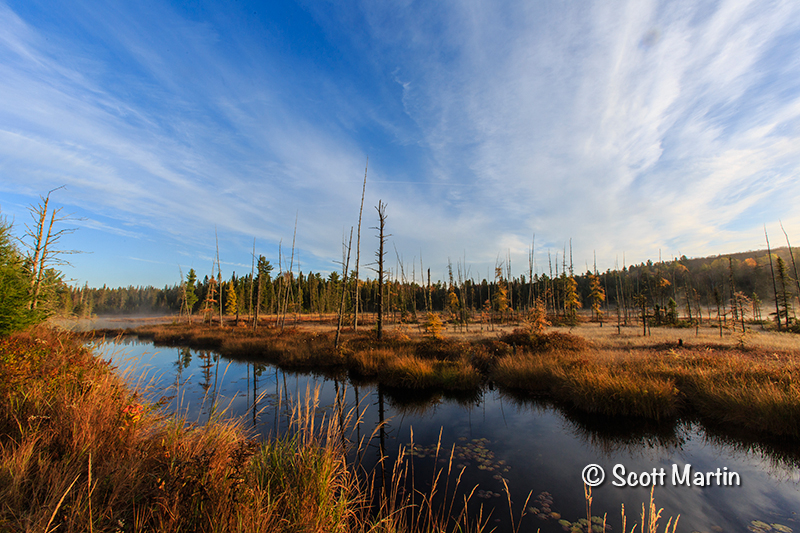
.
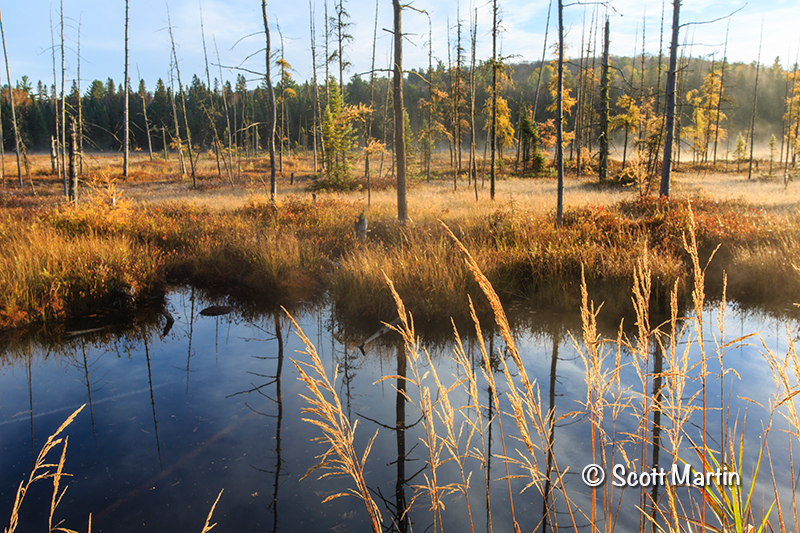
.
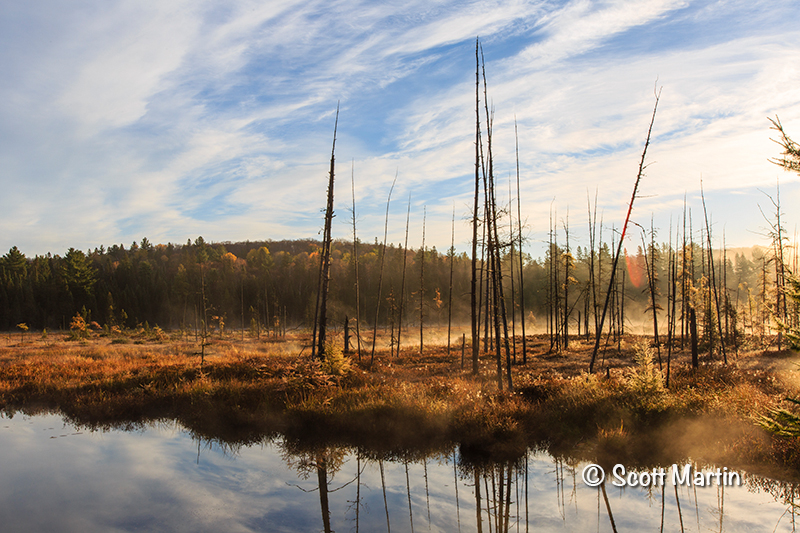
To conclude this post, let’s start a bit of a discussion on depth of field especially as it relates to landscape photography. Typically we want everything in a landscape image to be in focus which requires a small aperture in the range of f/18 to f/22. Also, the shorter the focal length of the lens the greater the depth of field is at the same aperture (compared to a longer lens). The small aperture and the desire to use low ISO’s for better image quality results in longer exposure times which is why it is mandatory for a landscape photographer to carry a tripod at all times. Also using a tripod makes you consider the composition and take more time to set up the best possible shot that achieves the goal you have in mind for the finished product. The next three images share the same composition and differ functionally only my the aperture at which they were taken.
f/22, 1/25, ISO100 ,29mm. Everything in the image is in focus. The whole scene is the object and your eyes wander throughout the image.
f/8, 1/160 sec, ISO100, 29mm. The shallower depth of field starts to make the red leaves become the object of the image.
f/2.8, 1/1250, ISO100, 29mm. The entire middle and back ground are out of focus and the red leaves become the only object receiving all of the observer’s attention.
So the question becomes, of the three images, which is your favourite? That is a very subjective question and there is obviously no right or wrong answer, it is simply a matter of preference. As a photographer it is good practice to take the same image at different apertures as well as focusing on different objects within the frame in order to use fluctuating depths of field to your advantage and achieving very different results. It is surprising how this practice will improve your landscape skills and help you develop a better eye for that perfect landscape image.
The bird images in this post were taken with a Canon 1D Mk III and a 500mm f/4 L lens with attached 1.4x TC for an effective focal length of 700mm, using a Jobu monopod and Jobu Jr. gimbal head. The landscape images were taken with a Canon 5D Mk III and 16-35 f/2.8 lens on a Gitzo travellers tripod with Markins ball head.


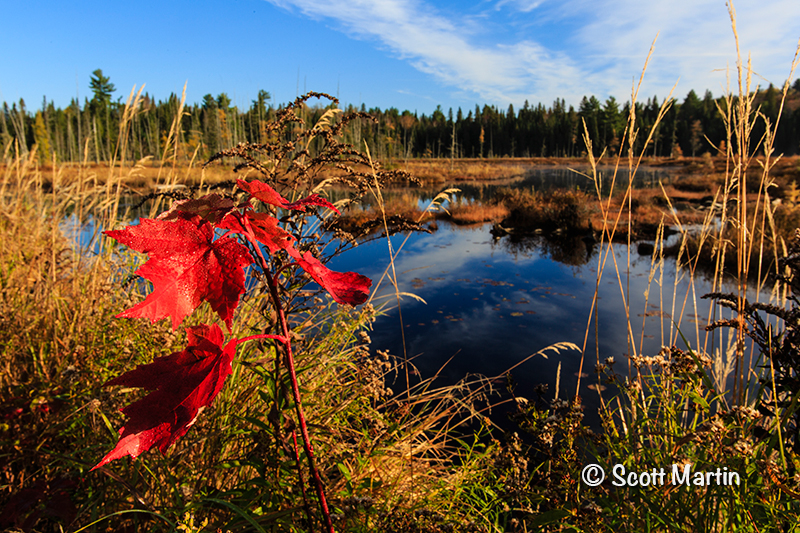
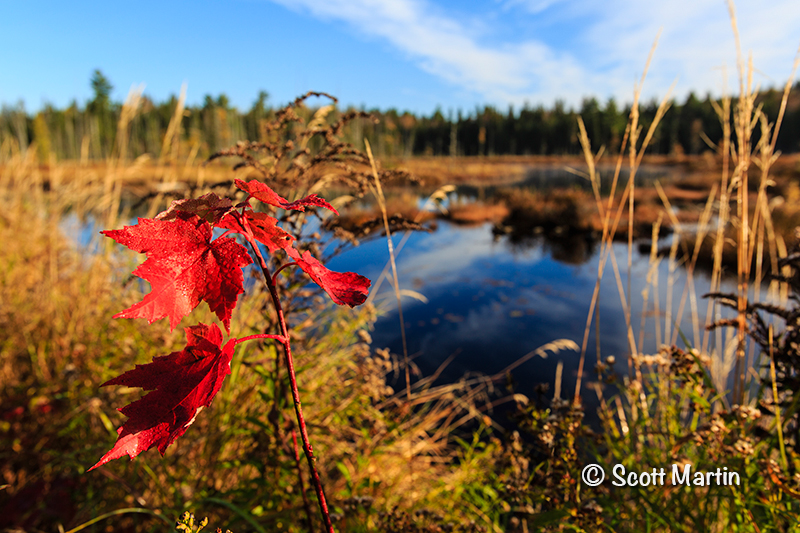
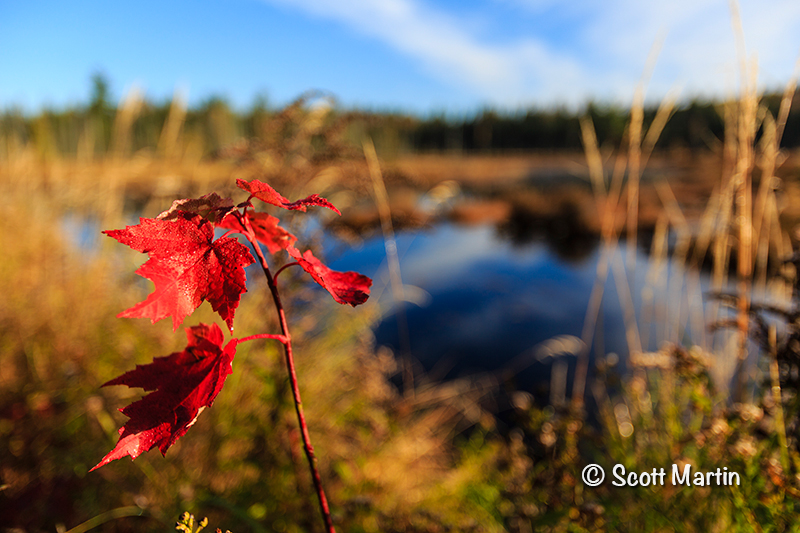
Scott, I’m with Rob on this for the exact reasons he describes! Hope to get out for some lessons with you soon!!
Thanks RK and I’m looking forward to getting out with you too…..not sure who will be giving lessons to who though 🙂
I hope to walk the Mizzy Lake trail in the next month or so and hopefully I will see that beautiful Pileated and the bandless Gray Jay too! All and all, great images as usual and like Rob, I am voting for the first image that captures the entire landscape.
Thank Arni, and if you are planning your hike for a Friday let me know! I’m agreeing with you & Rob re the DOF shots. It is interesting that for me the poorest result is the second version…..so much for the saying ‘f/8 and be there’.
Hi Scott,
Firstly let me say that I loved the whole post. Looking at the last three shots I’m voting for the first. Main reason is that I feel that there is so much to view in the whole shot. The red plant takes me in and then directs me to the lake and beyond. Limited depth of field in the last loses me on this one – mainly I think because there is so much else to see of the beauty God has created here.
Thanks Rob and I appreciate your comments regarding the depth of field. I agree the f/22 version is preferred but the shallow version may some ‘artistic’ merit if you are looking for a red Maple Leaf pic 🙂